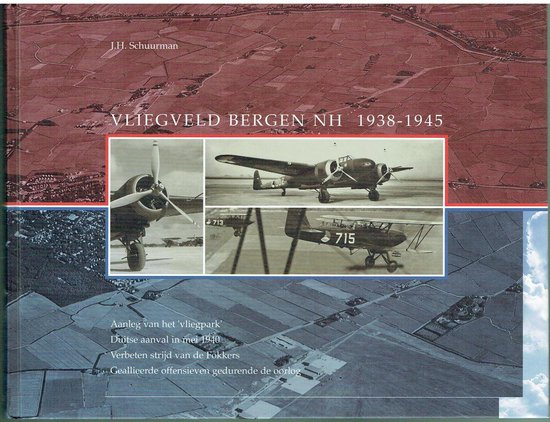Bergen Airport was a military airport south of the city of Bergen (North Holland). It was commissioned on 17 July 1939, shortly before the outbreak of World War II, for reasons of national interest. Bergen Airport existed from 1937 to 1944.
On 10 May 1940, Bergen airfield was assigned to the 1st Aviation Regiment (1LVR). This regiment had stationed 13 Fokker G.I fighter cruisers from the 4th Fighter Aircraft Department (4e JaVA) and ten Fokker C.X scouts from the Strategic Reconnaissance Department (StraVA).
The airfield fell into German hands after the Netherlands surrendered on 15 May. The Germans prepared it for reuse and expanded it. For example, aircraft parking bays were constructed and shelters and bunkers were built. The terrain was better drained and roads were constructed. From the summer of 1940, the airfield was known as Bergen airbase. In the period from 1940-1944, Luftwaffe units 7, 8 and 9 of JagdGeschwader 54 flew Messerschmitt Bf 109Es and a flak group was stationed at Bergen airfield, as well as German Nachtjägers of the BF 110 type. The most important tasks were regional air defence and escorting ships or convoys from the air. The airfield was also a fallback port for German bombers.
On 4 May 1944, the airfield was bombed by Allied planes because they could not reach their targets in Germany due to bad weather. After the Allied landings in Normandy, the Germans made the airfield unusable on 10 June 1944, as they did other airfields along the Dutch coast, for fear of possible enemy landings.
As part of Operation Manna and Chowhound, the airfield became one of eleven Dutch food-dropping sites at the end of the war. In early May 1945, food was dropped from Allied planes here on several occasions.
The airfield was no longer used after the liberation. Many bunkers and other buildings were demolished. Little remains of the hangars, but the tracks of the rolling doors in the concrete slabs of the platforms are still present. A few groups of former German bunkers, known locally as the bunker village, and roads still remind us of the occupation. In the 1950s, the site was designated for mobilisation for the Royal Netherlands Army. A small part of the area was also occasionally used by the National Reserve Corps.
In 2013, the initiators of the Ecovillage Bergen bought part of the site with the aim of establishing a sustainable, ecological residential and working community there in the future.
Sorry, no map found.


